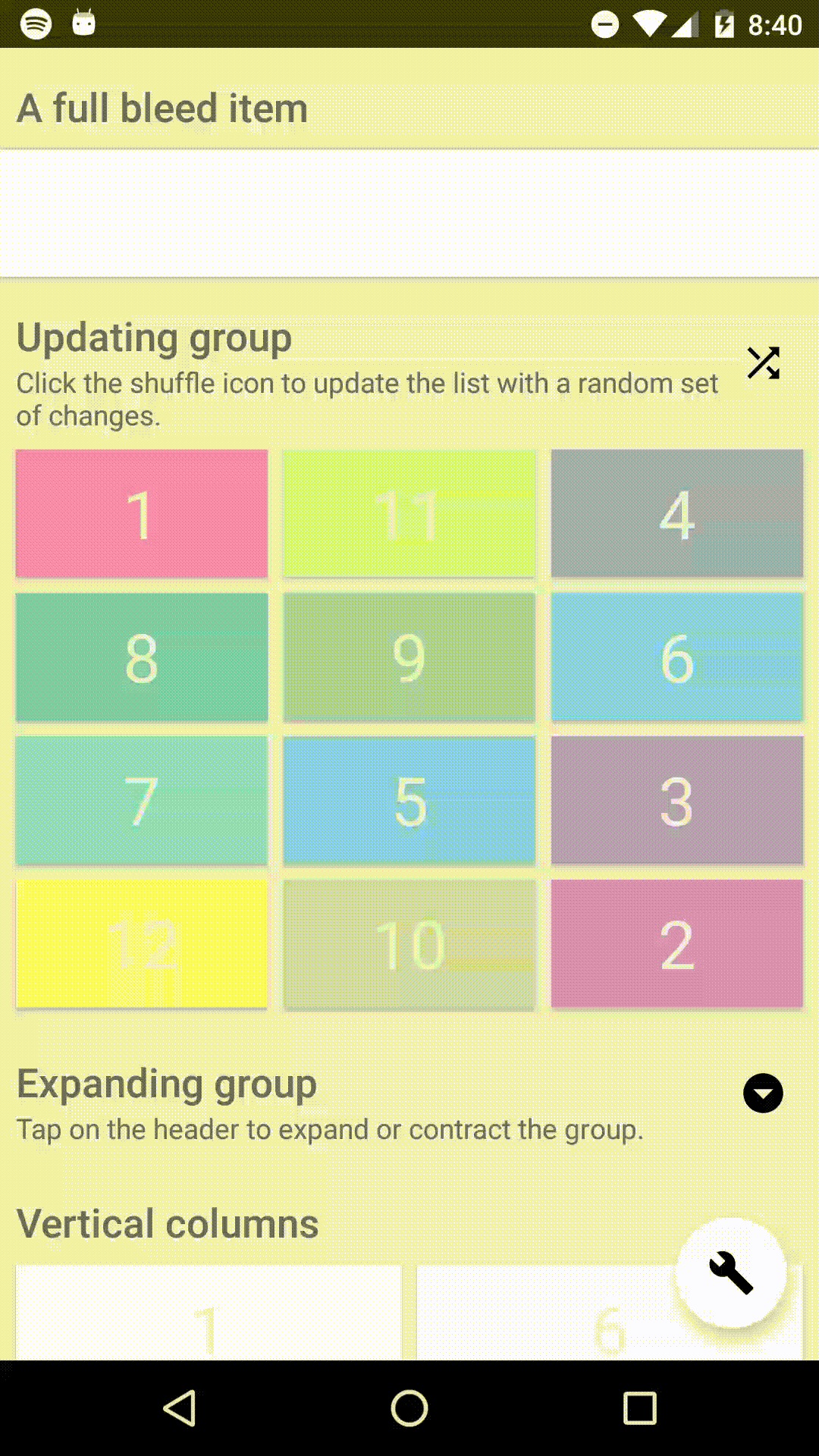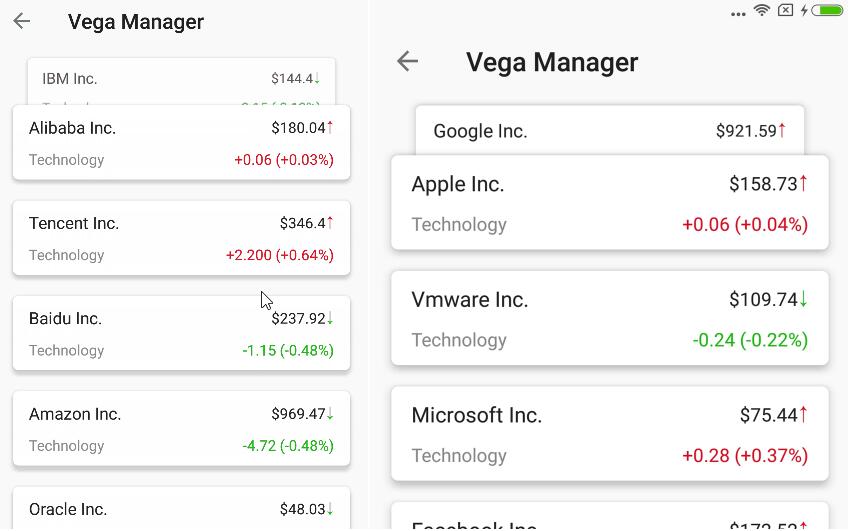groupie
Groupie is a simple, flexible library for complex RecyclerView layouts.
Groupie lets you treat your content as logical groups and handles change notifications for you -- think sections with headers and footers, expandable groups, blocks of vertical columns, and much more. It makes it easy to handle asynchronous content updates and insertions and user-driven content changes. At the item level, it abstracts the boilerplate of item view types, item layouts, viewholders, and span sizes.

Try it out:
Groupie includes a module for Kotlin and Kotlin Android extensions. Never write a ViewHolder again—Kotlin generates view references and Groupie uses a generic holder. Setup here.
Groupie also supports Android's data binding to generate view holders. Setup here.
You can also use Groupie with Java and your existing ViewHolders.
Which one to choose? It's up to you and what your project already uses. You can even use Kotlin and data binding together.* Or all your existing hand-written Java ViewHolders, and one new Kotlin item to try it out. Go crazy!
Get started
Use a GroupAdapter anywhere you would normally use a RecyclerView.Adapter, and attach it to your RecyclerView as usual.
Groups
Groups are the building block of Groupie. An individual Item (the unit which an adapter inflates and recycles) is a Group of 1. You can add Groups and Items interchangeably to the adapter.
Modifying the contents of the GroupAdapter in any way automatically sends change notifications. Adding an item calls notifyItemAdded(); adding a group calls notifyItemRangeAdded(), etc.
Modifying the contents of a Group automatically notifies its parent. When notifications reach the GroupAdapter, it dispatches final change notifications. There's never a need to manually notify or keep track of indices, no matter how you structure your data.
There are a few simple implementations of Groups within the library:
Section, a list of body content with an optional header group and footer group. It supports diffing and animating moves, updates and other changesExpandableGroup, a single parent group with a list of body content that can be toggled hidden or shown.
Groupie tries not to assume what features your groups require. Instead, groups are flexible and composable. They can be combined and nested to arbitrary depth.
Life (and mobile design) is complicated, so groups are designed so that making new ones and defining their behavior is easy. You should make many small, simple, custom groups as the need strikes you.
You can implement the Group interface directly if you want. However, in most cases, you should extend Section or the base implementation, NestedGroup. Section supports common RV paradigms like diffing, headers, footers, and placeholders. NestedGroup provides support for arbitrary nesting of groups, registering/unregistering listeners, and fine-grained change notifications to support animations and updating the adapter.
Items
Groupie abstracts away the complexity of multiple item view types. Each Item declares a view layout id, and gets a callback to bind the inflated layout. That's all you need; you can add your new item directly to a GroupAdapter and call it a day.
Item with Kotlin:
The Item class gives you simple callbacks to bind your model object to the generated fields. Because of Kotlin Android extensions, there's no need to write a view holder.
Item with data binding:
The Item class gives you simple callbacks to bind your model object to the generated binding. Because of data binding, there's no need to write a view holder.
If you're converting existing ViewHolders, you can reference any named views (e.g. R.id.title) directly from the binding instead.
You can also mix and match BindableItem and other Items in the adapter, so you can leave legacy viewholders as they are by making an Item<MyExistingViewHolder>.
Legacy item (your own ViewHolder)
You can leave legacy viewholders as they are by converting MyExistingViewHolder to extend Groupie's ViewHolder rather than RecyclerView.ViewHolder. Make sure to change the imports to com.xwray.groupie.Item and com.xwray.groupie.ViewHolder.
Finally, in your Item<MyExistingViewHolder>, override
Note:
Items can also declare their own column span and whether they are draggable or swipeable.
Gradle setup
Kotlin
In your app build.gradle file, include:
Remember to include
in the corresponding Item class for generated view references.
Data binding
Add to your app module's build.gradle:
Then, just wrap each item layout in <layout> tags. (The <data> section is optional.)
layout/item_song.xml
Bindings are only generated for layouts wrapped with
You can add a <data> section to directly bind a model or ViewModel, but you don't have to. The generated view bindings alone are a huge time saver.
Kotlin AND data binding?
Sure, why not? Follow all the instructions from both sections above. You only need to include the groupie-databinding dependency, and omit the references to android-extensions. You'll make BindableItems instead of importing and using Kotlin extensions.





